Watch these legendary racing boats being made by hand
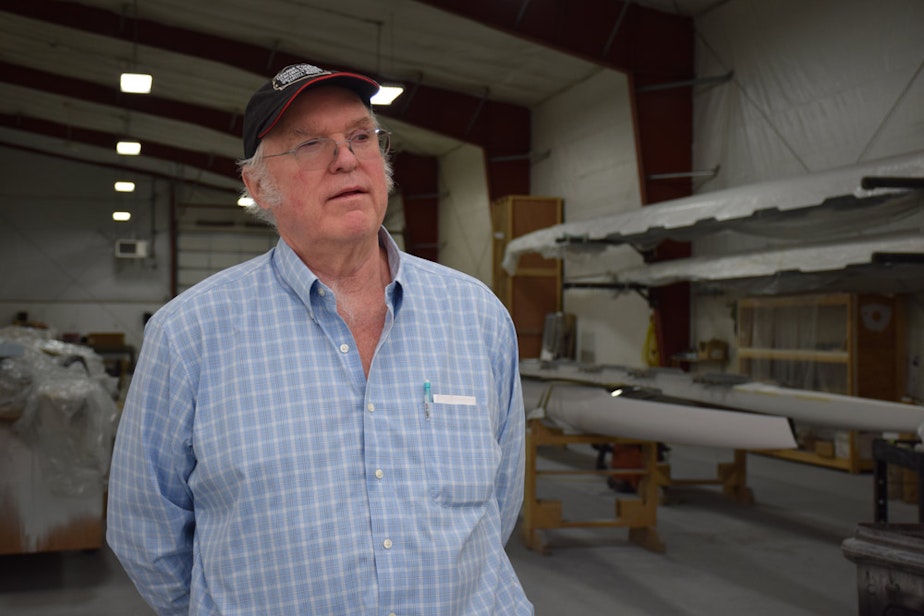
It takes about six minutes for the University of Washington’s top men’s rowing team to power the latest model Pocock racing shell on their home course through the Montlake Cut.
But it took the factory in Everett, Washington, 260 work hours to get the boat to that point.
The factory is a cacophony of sanding, buffing and sometimes bad muzak.
But the machinery noise is surprisingly minimal because all the boats – bow to stern – are made by hand.
“This is the heart of it,” said owner Bill Tytus, standing above the factory floor where several long boats in different stages of completion were laid out. “It’s the boats, it’s the guys that make them – that’s the heart of the business.”
George Pocock started Pocock Racing Shells in 1911. After his death in 1976, the company was run by his son, Stan Pocock, until Tytus took over the business in 1985.
Tytus' 50 years of rowing and 30 years of boat designing experience belie his casual demeanor as he gives us a tour of the factory floor.
“It’s both dusty and gooey, so if you don’t have your best clothes on you’re fine,” he warned us. Tytus himself is in flip flops.
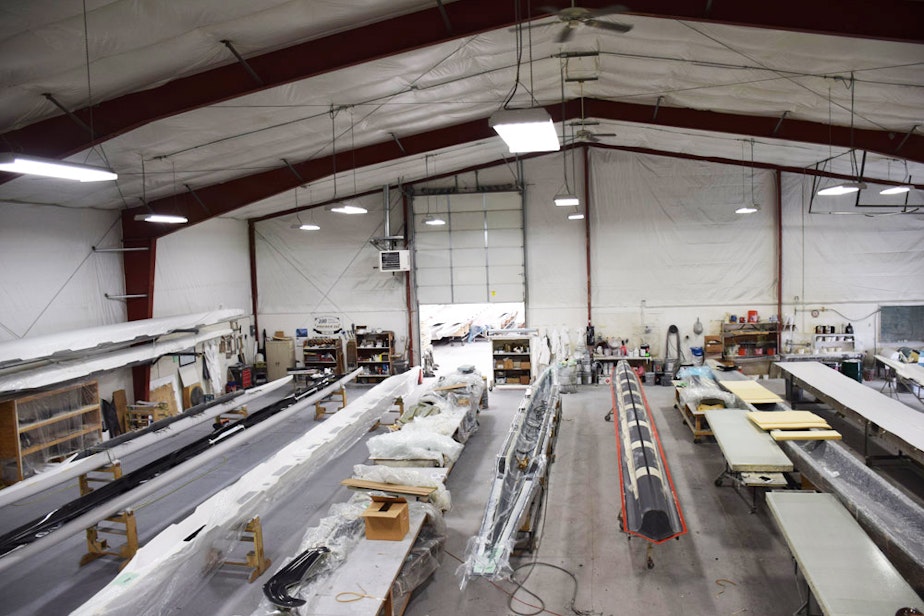
On the shop floor the boats are always laid out with all the bows pointing in the same direction. “That’s because not everybody who works here is a boat person," Tytus explained. "If we didn’t have all the boats pointing the same way we would end up with the fins on the wrong end and stuff like that.”
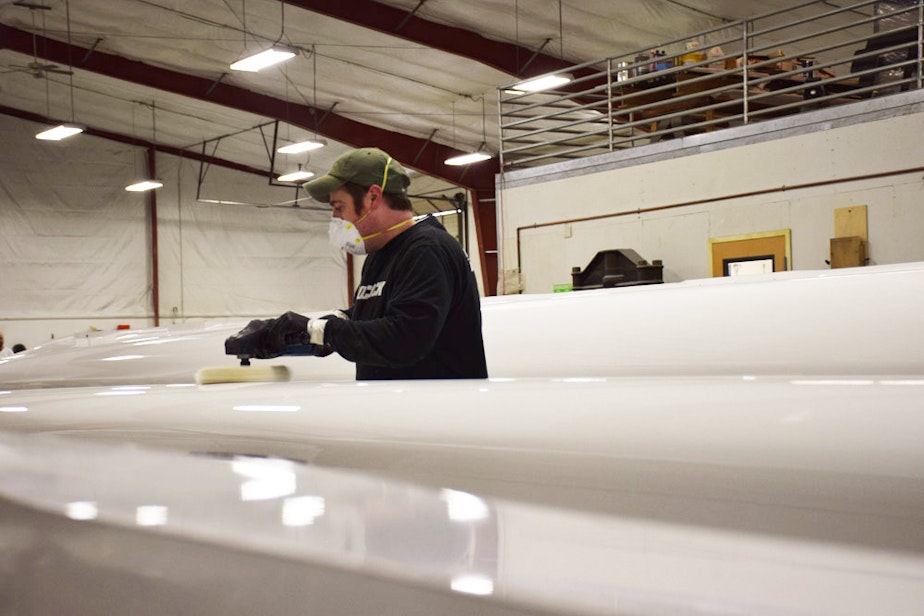
Pocock boats are built from the outside-in. They start with a mold and the paint. Other shops, Tytus said, work like an auto shop and will paint once the boat is completed. At Pocock, the paint, buffing and wax come first.
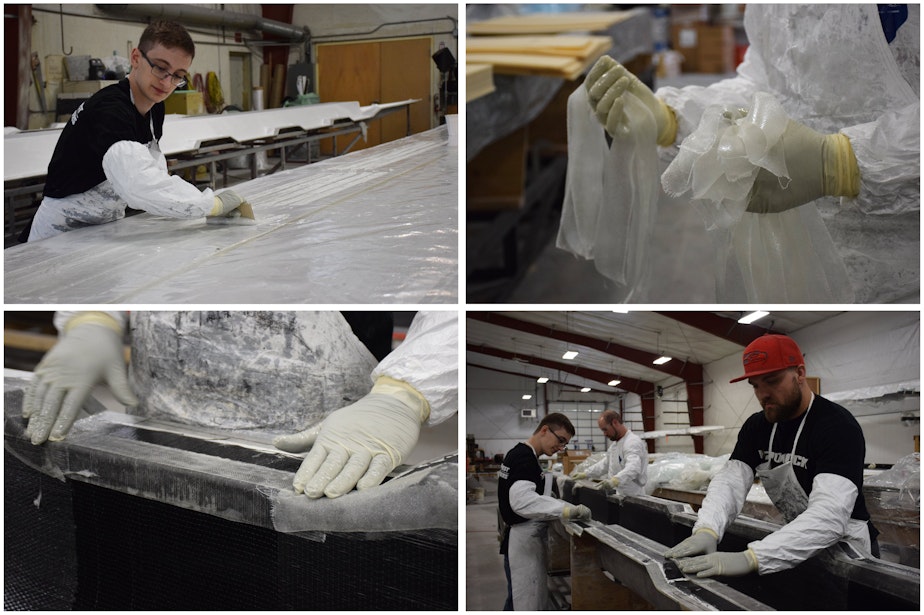
Using a long table — as gooey as Tytus promised — workers lay out strips of fiberglass tape and wet them with resin, which will stiffen as it cures to hold the fibers in place.
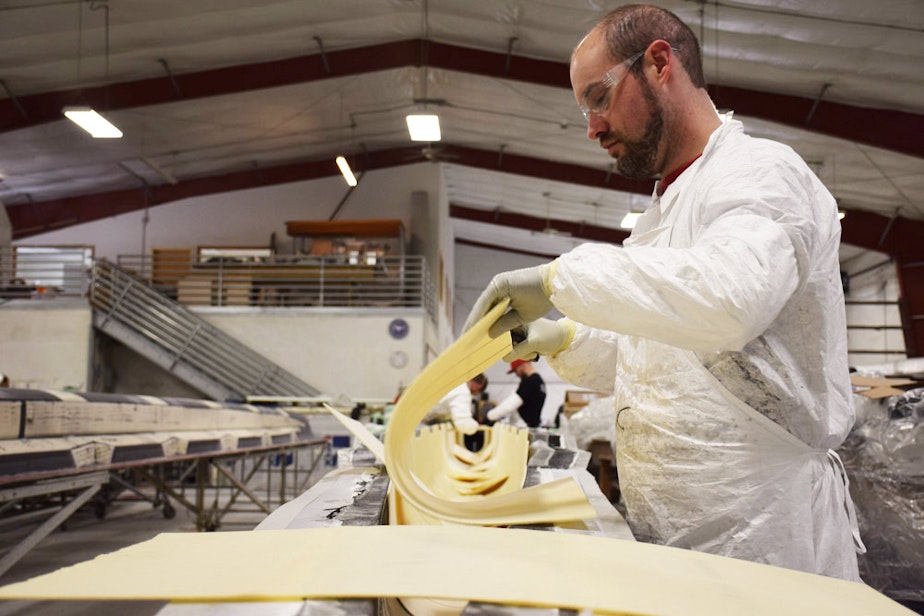
After the first layers of fiberglass, the men put in foam. “This foam makes a core, like a sandwich, which stiffens up considerably without adding much weight,” Tytus said.
Weight is naturally a serious consideration in the design of the boat. An eight-person racing shell will end up weighing in at 206 pounds — less than the weight of any individual rower in the boat.
“That’s the minimum weight, but that then becomes the maximum weight, because everybody wants it at the minimum weight,” Tytus said.
EXPERIENCE: What it’s like to be out with the Huskies on the water
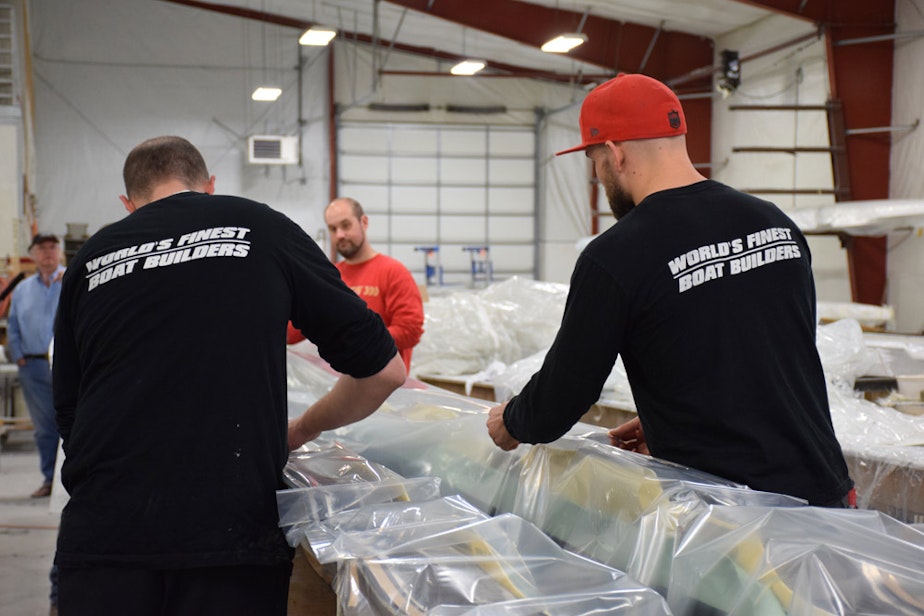
The fiberglass and foam layer will need to cure overnight. Each of these "lay-ups" takes four to six workers two to three hours to complete.
Once the layup is ready, the boat is covered in plastic and sealed. A vacuum pump outside sucks the air out — clamping the boat in all directions with an atmosphere of pressure as the layup cures.
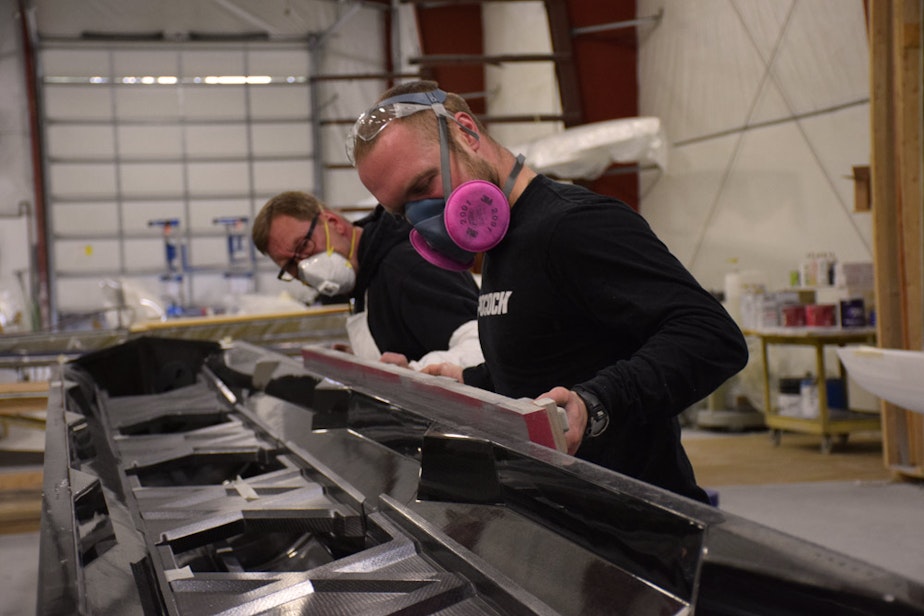
“It is all hand work. This is the height of industrial art," said Tytus.
Workers take a straight-edge ruler and carefully check the gunnels for gaps. A two-person team then uses a long hand sander to shape the gunnels so that they are perfectly parallel and straight.
The materials are expensive, but Tytus said the real expense is the work hours. According to the Pocock website, the most elite boat costs about $55,000.

In the back of the shop is a large tent that is used for storage. Tytus lifts up a plastic covering to reveal several wooden boats made from Western red cedar.
These are the last classic single rower shells built by legendary Pocock craftsman Bob Brunswick, who died in 2010. "He was the last of our wooden craftsmen," Tytus said.
Pocock doesn't build wood boats anymore. The factory makes some small boats for one or two rowers, but that's not their bread and butter.
“If we didn’t, it wouldn’t matter. We do it just to keep logos on the water,” Tytus said.
The company's business really centers around boats for schools and colleges, including the dominant UW Rowing team.




